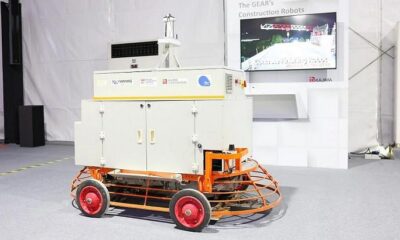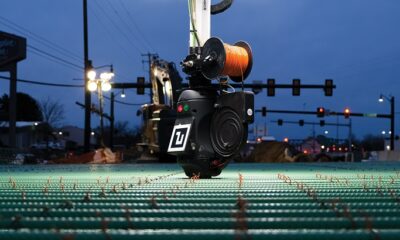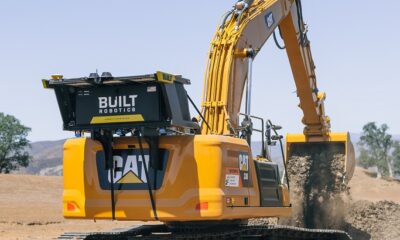Tools & Supplies
50 Tools Used In Construction
Assortments of common gadgets used in construction sites.
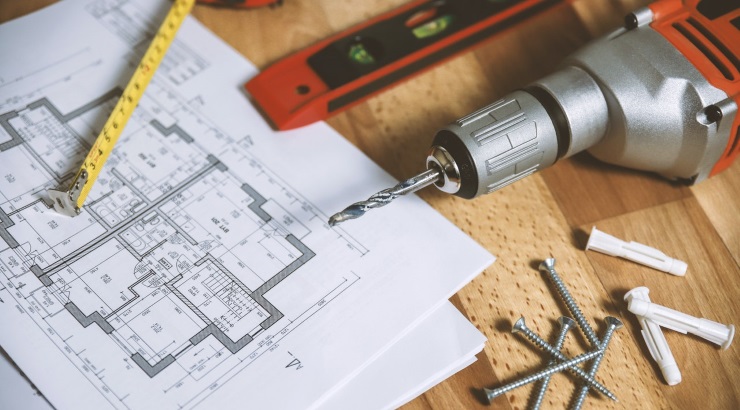
Construction tools, held by hand, perform tasks like making holes, smoothing surfaces, and cutting wood. They fall into two categories: common gears like shovels and hammers, or specialist tools such as electrical drills.
Using the right tool is crucial to avoid damage, inadequate installation, and safety issues.
Here is our construction tools list with pictures, showcasing the top 50 tools used in construction, including the electric drill, concrete mixer, digging bar, and more.
50 tools used in construction
1.) Adjustable wrench – Also known as adjustable spanner, this tool has an adjustable ‘jaw’ that helps to tighten or loosen nuts and bolts.
2.) Backsaw – This is a hand saw used in woodwork for accurate cutting tasks. It has a reinforcing rib opposite the cutting edge to allow for better control and more accurate cutting compared to other saws.
3.) Bolster – This is a chisel-like tool designed for accurate cutting of bricks.
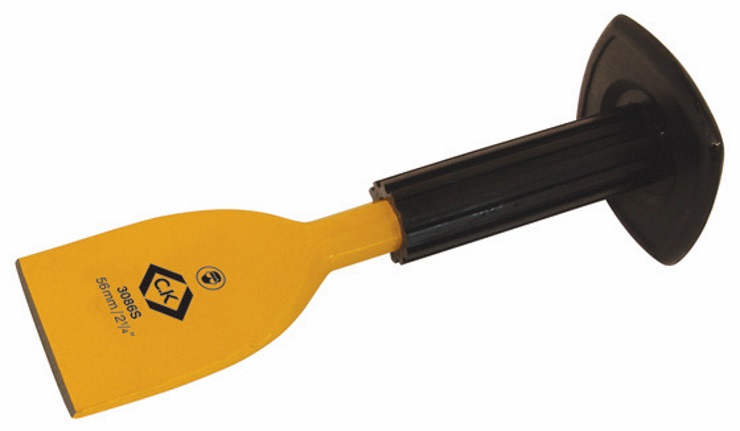
4.) Bolt – This is a metal fastener consisting of a head and a chamfer, with a helical ridge (thread) in between them. It is used for holding objects together.
5.) Boning rod – This is a big wooden T-square shaft used for creating level surfaces (trenches) at a construction site.
6.) Brace – This is used with auger or drill bit to drill holes on wood. To make holes, you need to exert pressure to its top with one hand and rotate the U-shaped grip with the other.
7.) Bradawl – This is a tool with a straight screwdriver-like blade and a wooden or plastic handle. It is used for making hollows in wood to allow the insertion of a screw or nail.
8.) Brick hammer – Also known as stonemason’s hammer; this is a tool with a flat face and a chisel-like blade used for cutting bricks or chipping off edges without requiring a chisel.
9.) Bump cutter – Also known as screed, a bump cutter is used for cutting and levelling concrete surfaces such as foundations and concrete floors.
10.) Caulking gun – This is a hand tool fitted with a cartridge or tube packed with material for sealing up cracks in a building.
11.) Chainsaw – This is a movable power-driven saw that cuts with a set of teeth fitted to a revolving chain that runs along a guide bar.
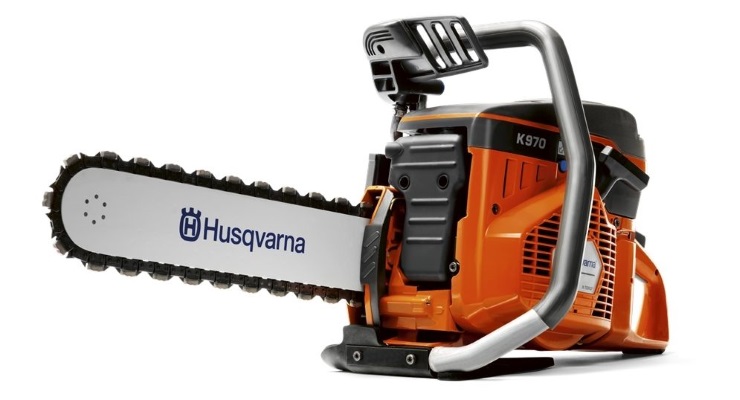
12.) Chisel – A chisel has a sharp cutting edge with a wooden or metallic handle. It is used for carving or cutting wood, or stone. This is achieved by forcing the chisel into the material.
13.) Circular saw – This is a spherical, hand-held, electric saw designed for cutting wood but can be used to cut other materials when fitted with different blades.
14.) Coping saw – This is a bow saw designed for cutting complex external shapes and interior cut-outs in carpentry.
15.) Cordless drill – This is a powerful electric tool used for drilling holes or driving screws. Being cordless, the drill is powered by rechargeable batteries.
16.) Crowbar – This is a lever with a curved end on one side and a flat end on the other – used as a second-class lever. It is mainly used for removing nails or tearing apart things.
17.) Diagonal pliers – Also known as side cutting pliers, diagonal pliers are used for cutting nails, screws, and wires. Their blades are fitted at an angle to the handles hence the name.
18.) Digging bar – This is a long metal bar used for breaking up hard materials such as concrete, digging holes, or as a lever to lift and move items.
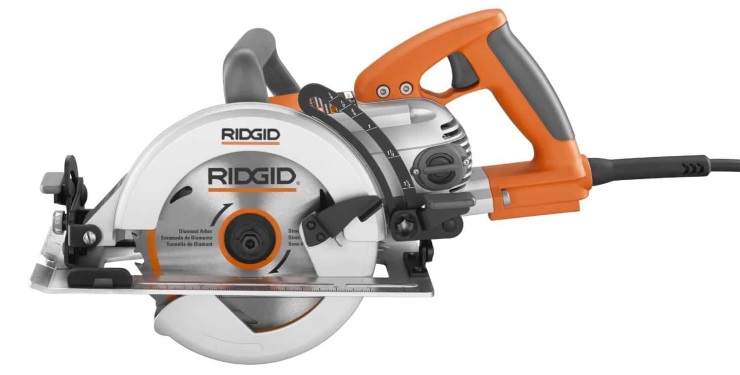
19.) Electric drill – This is an electricity-driven machine used for making holes in doors, walls, window frames, trusses, kitchen cabinets, etc.
20.) End frames – These are L-shaped mounts used at the end of cord that holds the brick work and level alignment accurately. They are used in bricklaying to level the alignment of brick course.
21.) Float – This is a hand-held tool with a smooth wooden surface on its bottom and a handle on its top. It is used for levelling a plastered concrete surface.
22.) Gloves – These are protective garments worn to cover hands from the wrist to the fingers. They protect a user’s hands from direct contact with materials or chemicals that can cause injury.
23.) Hacksaw – Originally designed for cutting metal, hacksaws have been modified to cut other materials such as plastic pipes.
24.) Hammer – This is a hand-held tool with a toughened steel head and a wooden handle used for shaping objects, driving nails, or breaking objects.
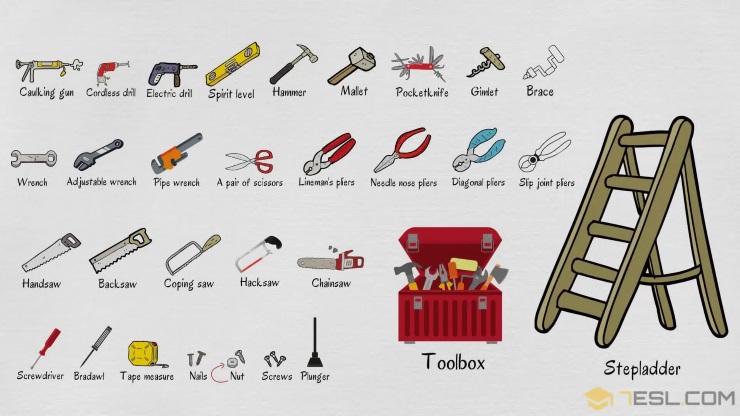
25.) Handsaw – Also known as panel saw, this tool is used for cutting wood into different shapes.
26.) Helmet – This is worn in the head to protect the wearer from serious head injuries in case of a fall or collision with a blunt object.
27.) Hoe – This is a digging tool with a metal plate and a long wooden handle fitted at an acute angle.
28.) Iron pan – This is a wide shallow pan used for lifting concrete at a construction site or just carrying sand or excavated soils on site.
29.) Jack plane – Also known as fore plane, a jack plane is a carpentry bench plane used for dressing a wood pane down to size in readiness for truing and/or edge jointing.
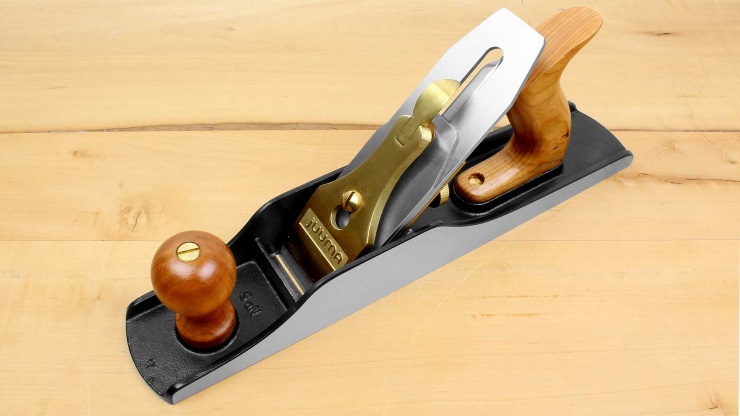
30.) Ladder – This is a wooden or metallic apparatus used for climbing to higher floors of a building.
31.) Line and pins – These are used for keeping bricks straight and level along each course of a wall.
32.) Lineman’s pliers – These are used in cabling to cut, straighten, bend, or twist wires together.
33.) Mallet – This is used in woodwork for knocking wooden pieces together or driving chisels or pins.
34.) Mason’s square – This is a tool used to verify the accuracy of corners by ensuring that two perpendicular surfaces are at a right angle with each other.
35.) Measuring box – This is a container with a standardised capacity used for measuring quantities of aggregate or mortar to create a proportionate mixture of mortar and concrete.
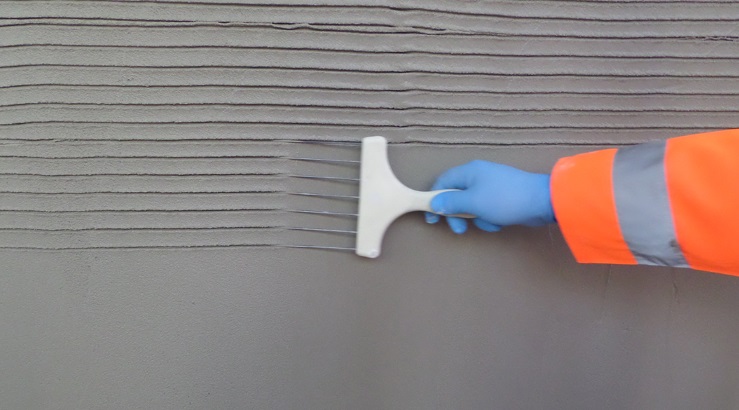
36.) Measuring tape – This is a portable tool that helps to calculate the distance between two objects.
37.) Measuring wheel – This is a wheel that is pushed to compute the distance between two objects. It is used to calculate longer distances where a measuring tape would not be feasible.
38.) Nail – This is a small metal shaft that is pointed at one end and flattened at the other and used for fastening objects together – mostly pieces of wood.
39.) Needle nose pliers – This tool has long, tapering jaws with a pointed tip for performing tasks such as gripping, twisting, and cutting small-gauge wire.
40.) Nut – These are used with bolts to join things together. This is made possible by a combination of their thread friction, the minor stretching of the bolt, and firmness of the objects to be fastened together.
41.) Pick axe – This is used for breaking up and splitting rocks, hard earth, and concrete.
42.) Pipe wrench – This is used for turning threaded pipe and pipe fittings for assembly or loosening pipes.
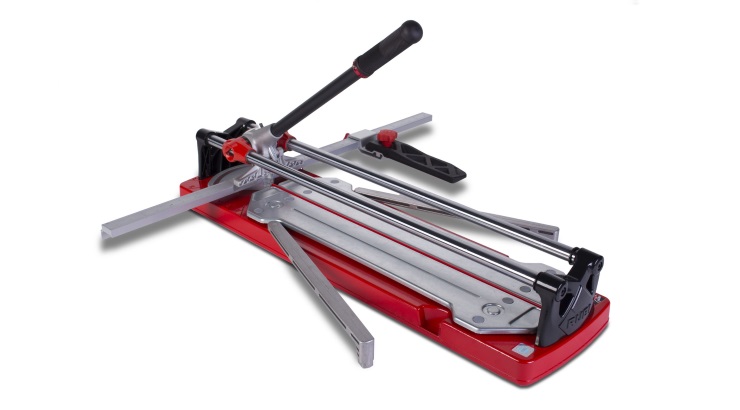
43.) Plumb bob – Also known as plummet, a plumb bob is a small but heavy piece of metal with a pointed tool at the bottom, suspended from a string to establish an accurate datum.
44.) Plumb rule – Consisting of a straight wood board with uniform edges, a plumb rule is used for checking whether the vertical line of wall is seamless vertical or not.
45.) Plunger – This is a tool consisting of a rubber suction cup with a wooden or plastic shaft. It is used for clearing blockages in drains and pipelines.
46.) Pocketknife – This is a foldable knife with an assortment of blades that can perform various tasks from cutting strings, to opening sealed products, or even to mark cables.
47.) Polishers – These are used for polishing the surfaces of woodworks, tiles, etc.
48.) Putty knife – This is a specialised tool used when glazing single glazed windows to level putty finishing and to ease the thickness when it gets heavier.
49.) Rammer – This is a light weight (hand or machine operated) device used for compacting excavated spaces by using impact force to compress the ground.
50.) Rubber boots – Often made from rubber (although some are made from polyvinyl chloride), boots are worn when walking on muddy sites or drains to protect the wearer’s feet from harm.
More construction tools names
51.) Safety glasses – These are protective gears worn to prevent chemicals, broken glasses and other particles from striking the eyes of the wearer.
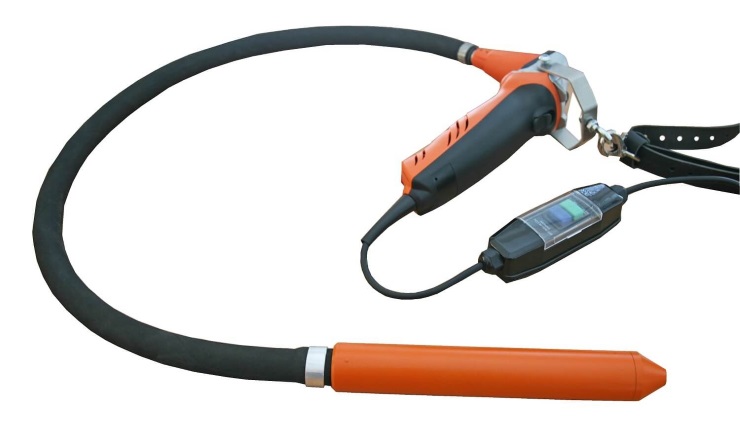
52.) Sand screen machine – This a mesh-fitted apparatus used for sieving sand at a construction site. The sand is emptied on the mesh which vibrates allowing fine grains of sand to fall through.
53.) Scissors – A wide range of scissors exist for specialised purposes such as cutting metal foils, ropes, wires, and other thin construction materials.
54.) Scratchers – This is a tool fitted with spikes that scratch a plaster undercoat to make it easier for the upper layer of plastic to stick.
55.) Screw – This is a corkscrew-shaped ridge (thread) bound around a cylinder. The wide head allows a screwdriver or wrench to grasp the screw when driving it in to hold two objects together.
56.) Screwdriver – This is used for screwing (fixing) and unscrewing (removing) screws. It has a handle and a shaft, ending in a tip that is placed into the screw head before turning the handle.
57.) Sledge hammer – This is mainly used for light demolition works, driving nails, and pushing the steel chisel when cutting stones or twisting metal.
58.) Slip joint pliers – These are pliers whose fulcrum (swivel) can be moved to increase the size range of their jaws. They are useful for gripping and twisting hardware.
59.) Spade – This is a hand tool used for digging or breaking up blocks of soil. It is commonly confused with a shovel – which is mainly used for scooping earth.
60.) Spirit level – This is a vessel partly filled with a coloured liquid leaving a bubble in the tube. It determines whether a surface is level on the horizontal or vertical planes.
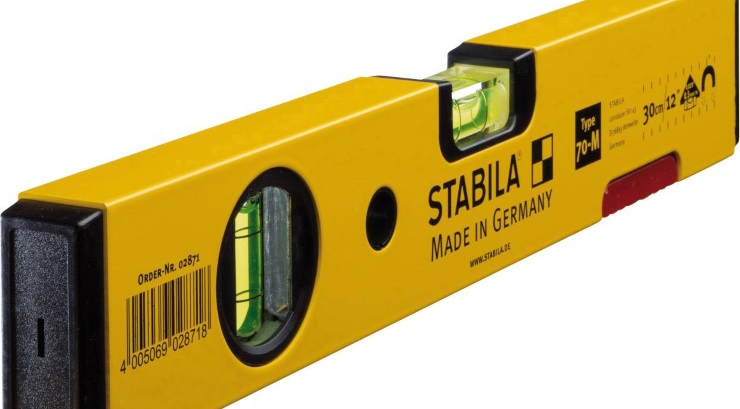
61.) Straight edge brushes – These are used to deliver finishing to a plastered surface particularly at corners and edges of walls.
62.) Tile cutter – As the name suggests, this tool is used for cutting tiles to make them smaller enough to fit the spaces where floors meet the walls.
63.) Toolbox – Also known as workbox, or toolkit, a toolbox is a container designed to pack, carry, and protect an assortment of tools.
64.) Trowel – This is a hand tool with a pointed, scoop-shaped metal blade and a wooden, plastic, or metal handle used for lifting and applying cement mortar in small quantities.
65.) Vibrator – This is a powered tool that assists concrete during its settling period by forcing air out of the mixture resulting in a more compact and level slab.
66.) Wedge – This is a triangular inclined pane, often made of wood, or metal, used to lift objects, hold items in place, and to separate two objects.
67.) Wheel barrow – This is a small open cart with one wheel and handles used for moving construction materials from one point to another.
68. Wrench – Also known as spanner, a wrench is used to provide grip and mechanical help in applying torque to turn nuts, bolts, and other objects – or to prevent them from turning.







